
A Weekend’s Rodenting around Santiago, Chile
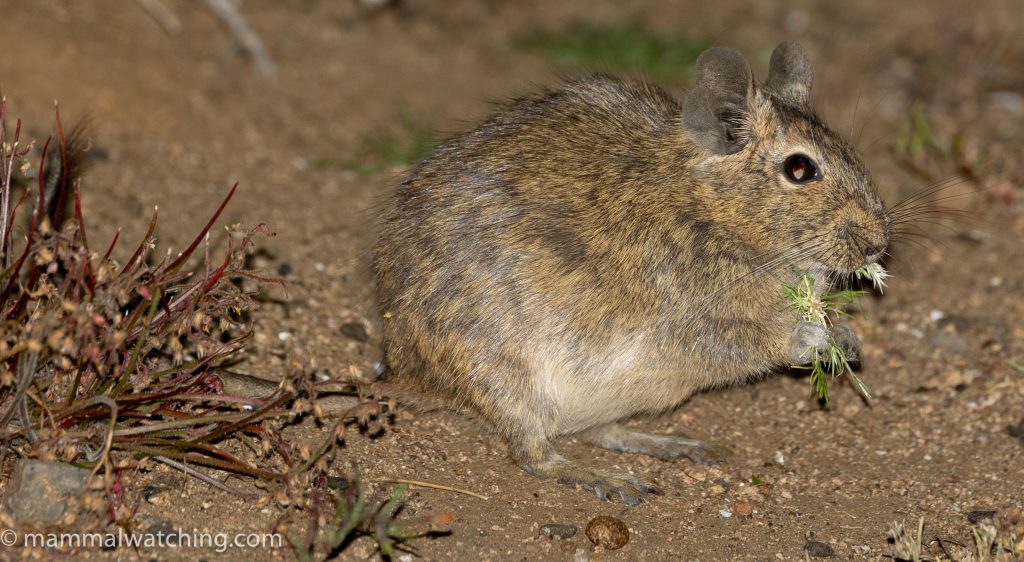
Common Degu (Octodon degus)
I was in Bolivia last month (trip report coming in early 2025 I hope) and added on a weekend in Santiago with Alex Meyer and Elias Sadalla Filho, primarily to look for Chinchillas after Rob & Romy Jansen’s gripping report from 2023.
There are several other nice looking rodents in the area: Bennet’s Chinchilla Rats and Degus, which would each represent new mammal families for me, and Coruros, Chile’s answer to the tuco-tuco. And all seemed possible to see in a weekend around Santiago.
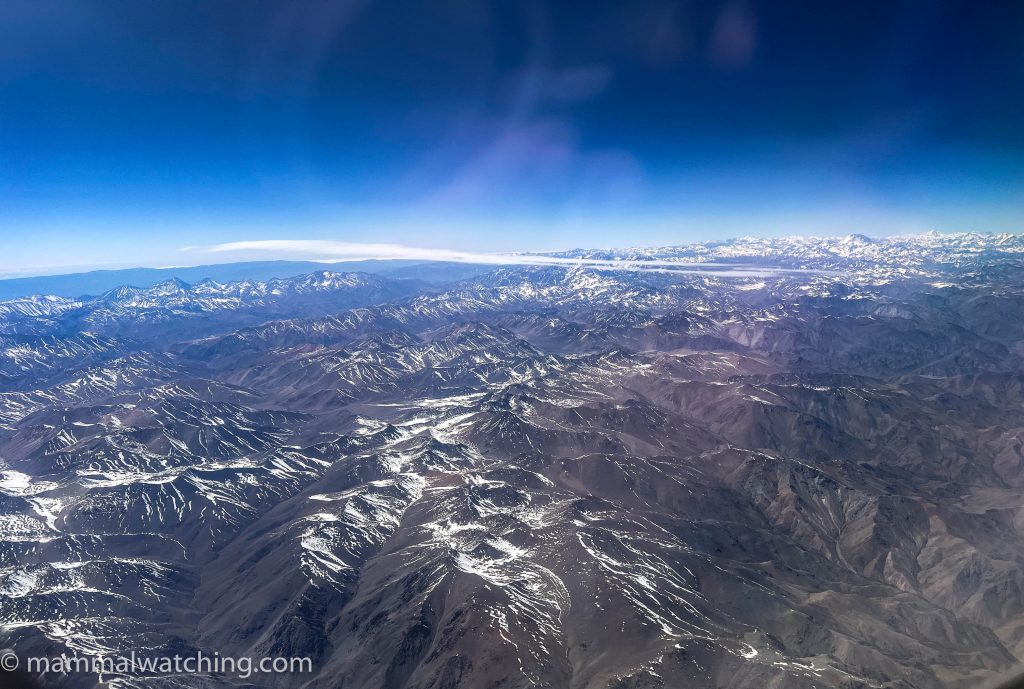
Between Bolivia and Santiago
I volunteered to figure out the Chinchillas, while Alex was in charge of the Chinchilla Rats. Alex got the short end of the stick.
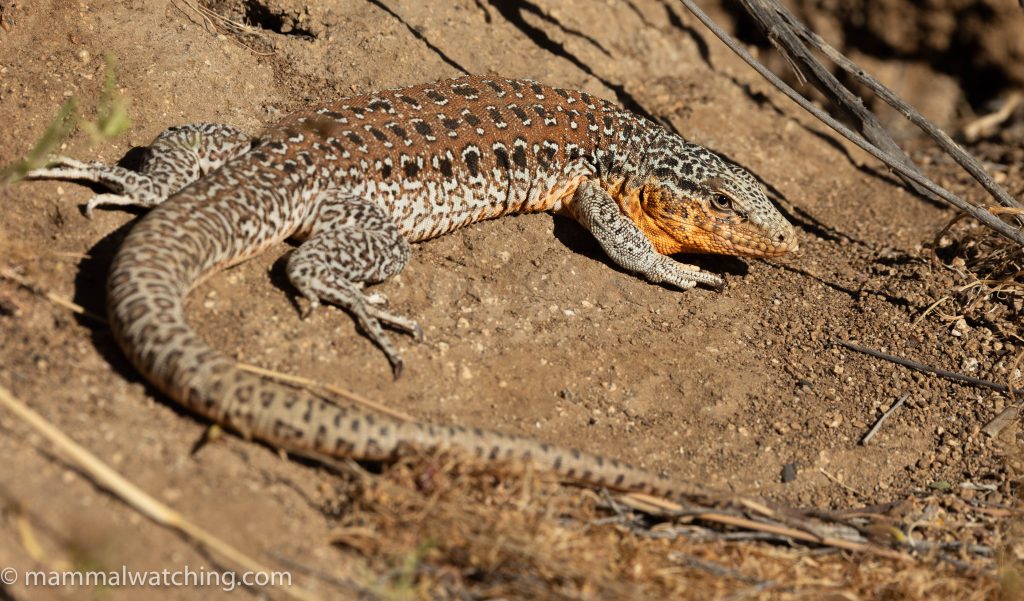
Chilean Iguana
The Chinchillas were pretty easy, thanks to the very helpful information I got from Rob Jansen.
The Chinchilla Rats were more of a challenge. Researchers told me they were generally hard to find, though Adam Walleyn recommended we try the Granitas section of La Campana National Park where he had seen a few. Unfortunately the park is now closed at night, and trying to get permission to enter after dark was complicated and possibly impossible for us mammalwatchers.
But Alex was undaunted. He found a local guide – Alejandro Bello – who rose to the occasion. Alejandro is an aspiring nature film maker from Limache, near Valparaiso. He’s worked with the BBC among others to scout locations and plan shoots on Chilean mammals and has recently set up his own ‘tailor made’ travel agency, Bello Chile.
Alejandro lived in New York for several years and speaks perfect English. A lot of the trip’s success was down to him. With very little notice he was able to track down sites for our target mammals, in part due to a strong network of friends and contacts. We think he would be a great choice for anyone wanting to mammalwatch around Chile.
Las Chinchillas Nature Reserve
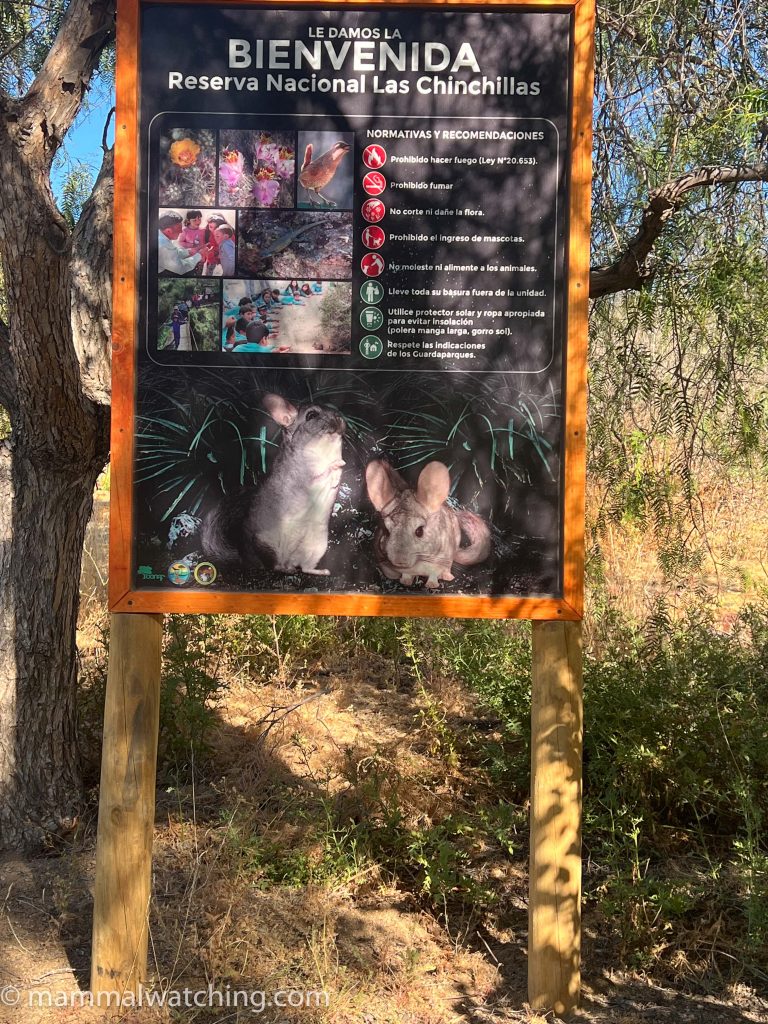
Las Chinchillas reserve is about 4 hours’ drive from Santiago Airport. After a very slow immigration line, Alex and I met up with Alejandro, his wife Lizza, and Elias who had arrived the night before. We drove straight to the reserve, stopping to pick up groceries on the way.
Although the reserve is only open during the day, Alejandro discovered that we could arrange to stay in a cabin inside the reserve and right next to the visitor centre and so we spent two nights here.
There is an active Degu colony right in front of the visitor centre. We saw the first of many animals within minutes of arriving. Just look around the bushes in front of the picnic tables.
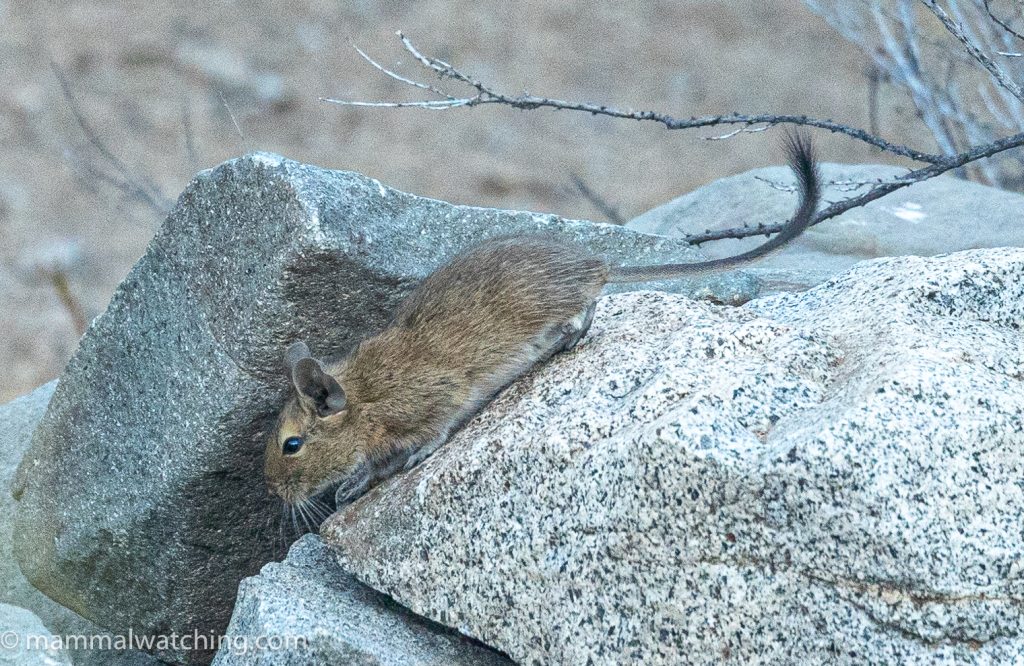
Common Degu (Octodon degus)
A long night walk produced one or two more Degus and several feral European Rabbits. But no Chinchillas and no real Chinchilla habitat. The Chinchillas, as Rob Jansen had told me, are better found nearby.
When Boris and Jaimie, the reserve’s rangers, returned to work next morning we grilled them on the local mammals. They said there were Chinchilla Rats living in the wood pile behind the visitor centre, and showed us roosting myotis bats – the newly described Valparaiso Myotis it seems – living in the roof of the visitor centre.
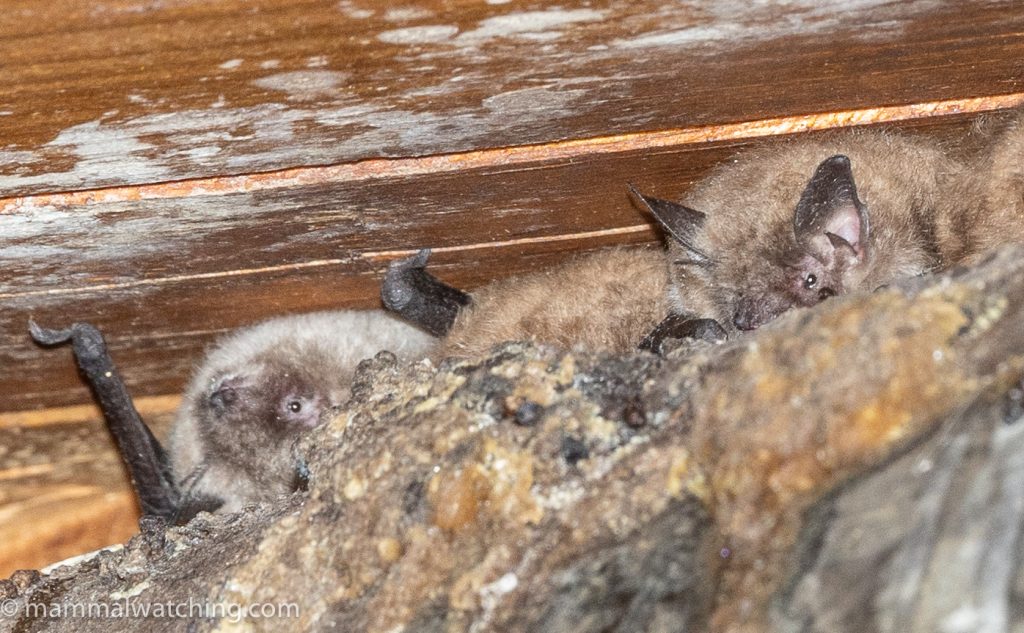
Valparaiso Myotis (Myotis arascens)
Other notable mammals in the reserve include Elegant Fat-tailed Mouse Opossums (which are not uncommon it seems) and Central Chilean Colocolo, which are occasionally seen.
They recommended we look for the Chinchillas in a different section of the park, a few miles down the road from the visitor centre towards Illapel. One of the rangers was kind enough to show us exactly where to look. It turned out that this was the very same place that Rob and Romy had stumbled upon the previous year. Rob and Romy had understood it was private property and had put me in touch with Elsa who lives nearby. But the rangers explained the area is really a part of the nature reserve, and that Elsa, who used to work on the reserve, still lives there even after the reserve was gazetted.
The Chinchilla hotspot is a hillside strewn with large boulders and quite different habitat to where we had been looking the previous evening.
This section of the reserve is locked and in order to visit you would need to talk to the rangers at the visitor centre.
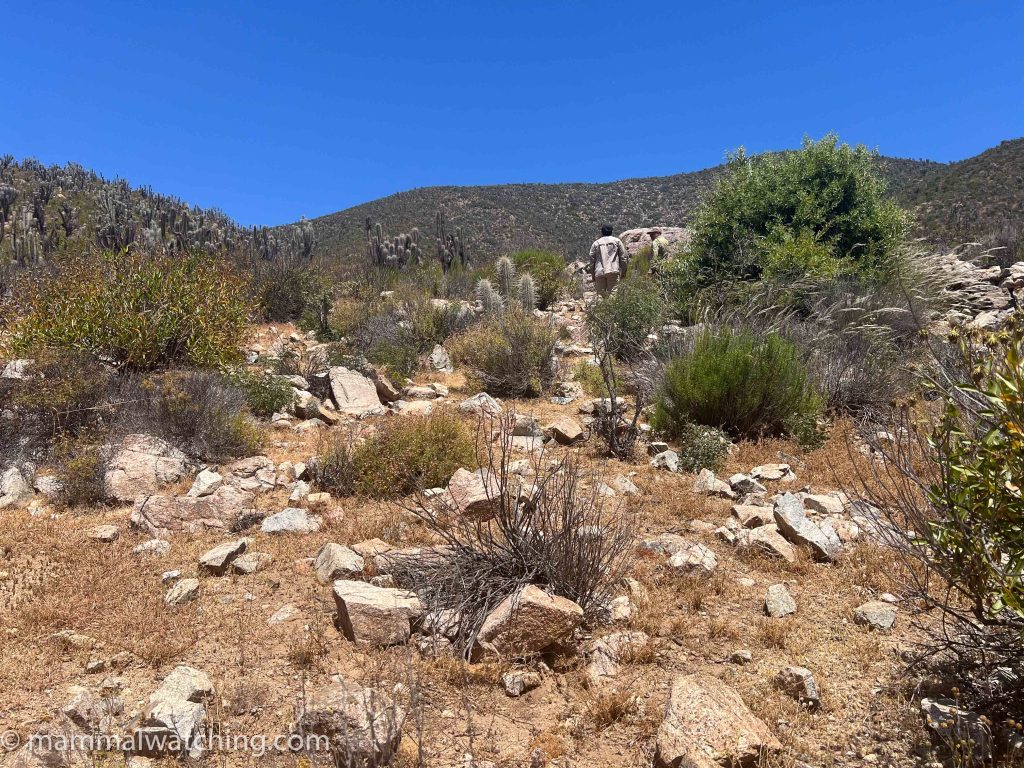
Chinchilla habitat
We arrived just after dark and 20 minutes later had a great view of our first Chinchilla emerging from the rocks.
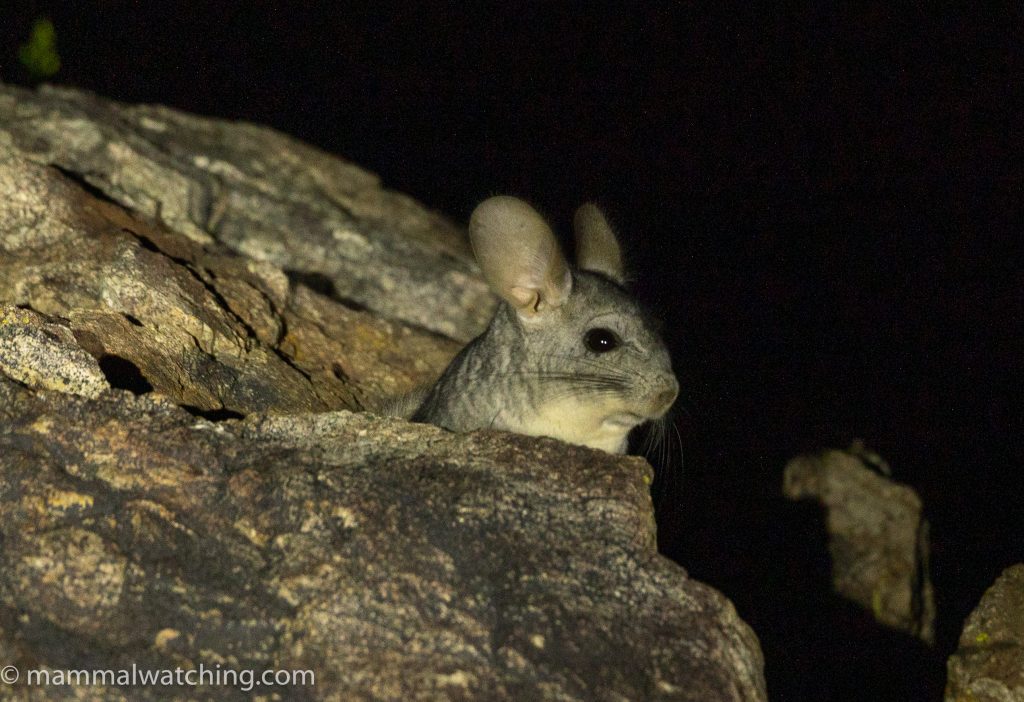
Chilean Chinchilla (Chinchilla lanigera)
Some issues with my flash meant I missed several great photo opportunities but managed just one full shot of the animal before it ducked out of site.
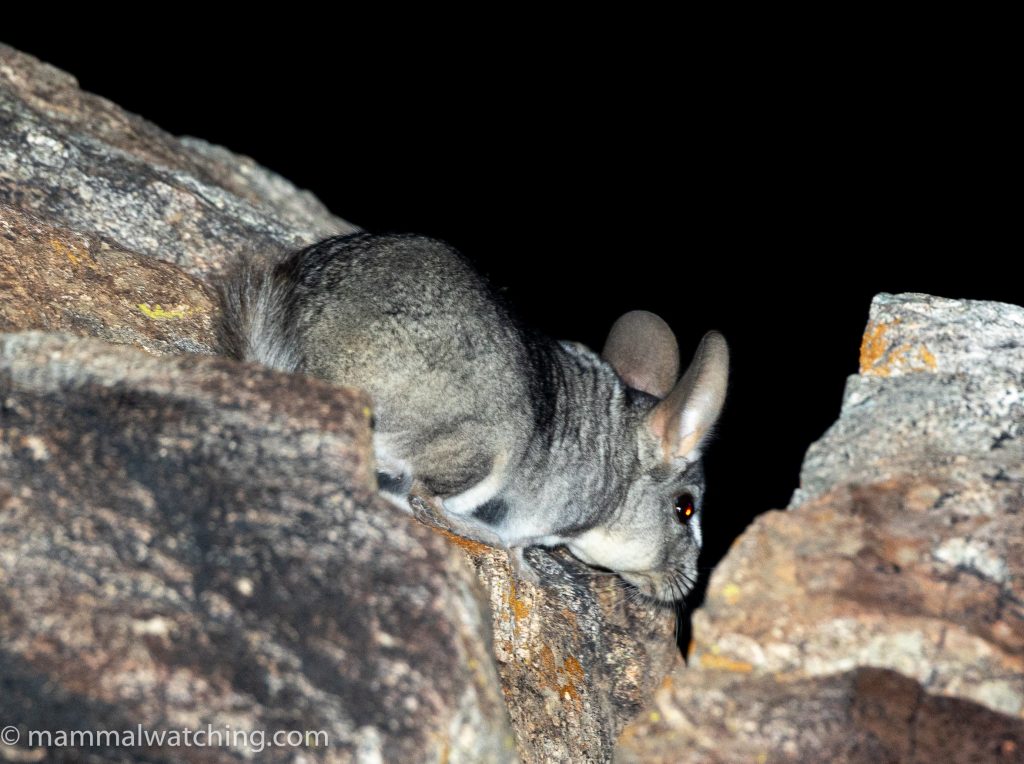
Chilean Chinchilla (Chinchilla lanigera)
We wandered around for another half an hour – and saw two or three more animals – before returning to our cabin to search for the Chinchilla Rats.
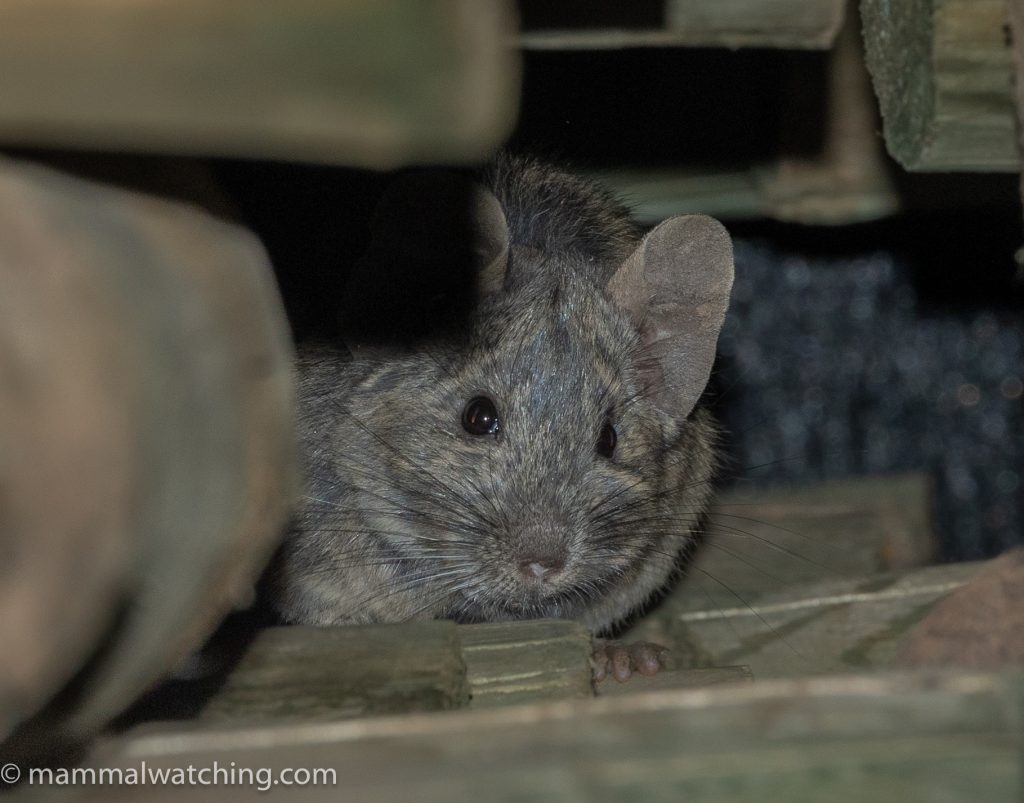
Bennett’s Chinchilla Rat (Abrocoma bennettii)
These were very easy to see in the woodpile, as the rangers had predicted. There was at least one animal moving among the logs and it/they seemed quite curious.
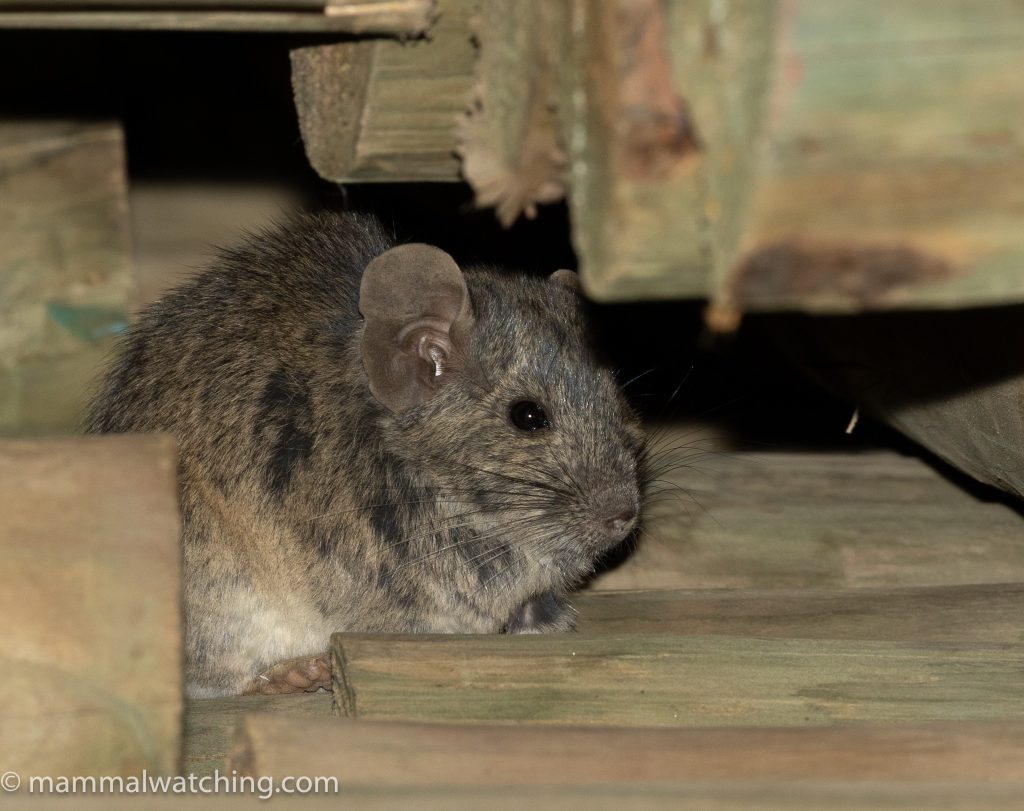
Bennett’s Chinchilla Rat (Abrocoma bennettii)
A Chinchilla-sized rodent and almost as beautiful.
Limache
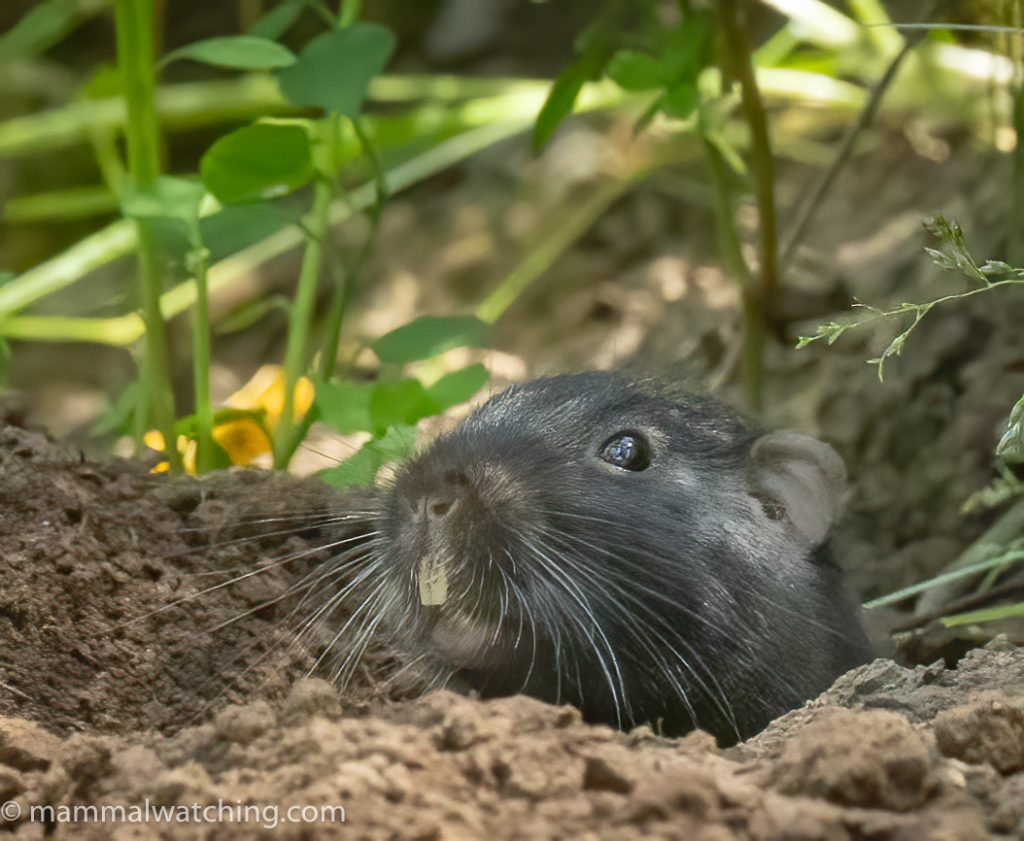
Coruro (Spalacopus cyanus)
We left very early the next morning for the small town of Limache, where Alejandro and Lizza live, to try for Coruro.
Alejandro knew a local colony, and had visited earlier in the week to check it was active. We hiked up a hill for about 45 minutes along a trail through forest on the edge of town and ended up around here just before noon. Thankfully it was an overcast morning and an animal was still active.
I got a glimpse as soon as we arrived but Alex and Elias didn’t. The animal went underground and didn’t return.
We separated to stake out different holes. As soon as Alex and Elias moved to ‘their’ hole, my Coruro briefly resurfaced and they missed it.
Twenty minutes later the stress levels were starting to rise, especially when a pair of hikers walked past shattering the silence we were waiting in.
Two minutes later the Coruro re-emerged. Alex saw it. Elias missed it.
At this point I had a mammalwatching Eureka moment. It struck me that the Coruro I had been watching emerged from its burrow shortly after someone walked along the trail, as if to survey the scene and check the danger had passed.
So we put the theory to the test. We walked up the hole loudly and retreated. And bingo the Coruro emerged!
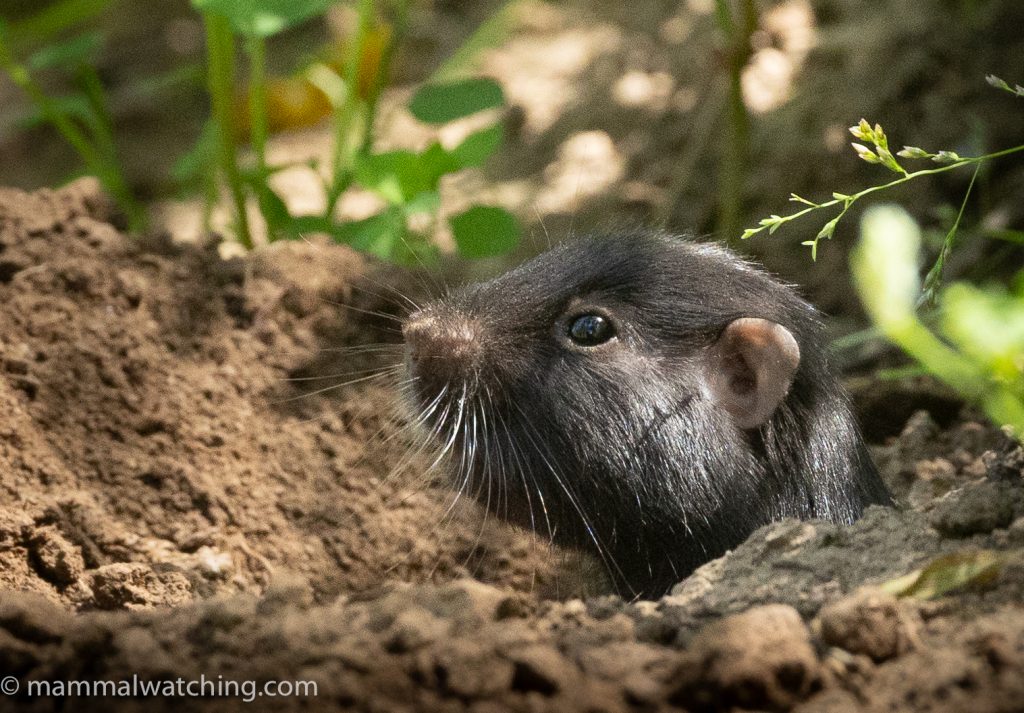
Coruro (Spalacopus cyanus)
So if I achieve nothing else in life then I can, at least, look back proudly at this patent-pending Coruro spotting technique. It may of course be a coincidence of course but let me know if it works for you. I suspect this might also work for pocket gophers and tuco-tucos, so long as they are in an active phase. Unless of course this was just a particularly nosey Coruro.
Now we need some techniques that works for moles…
La Campana National Park
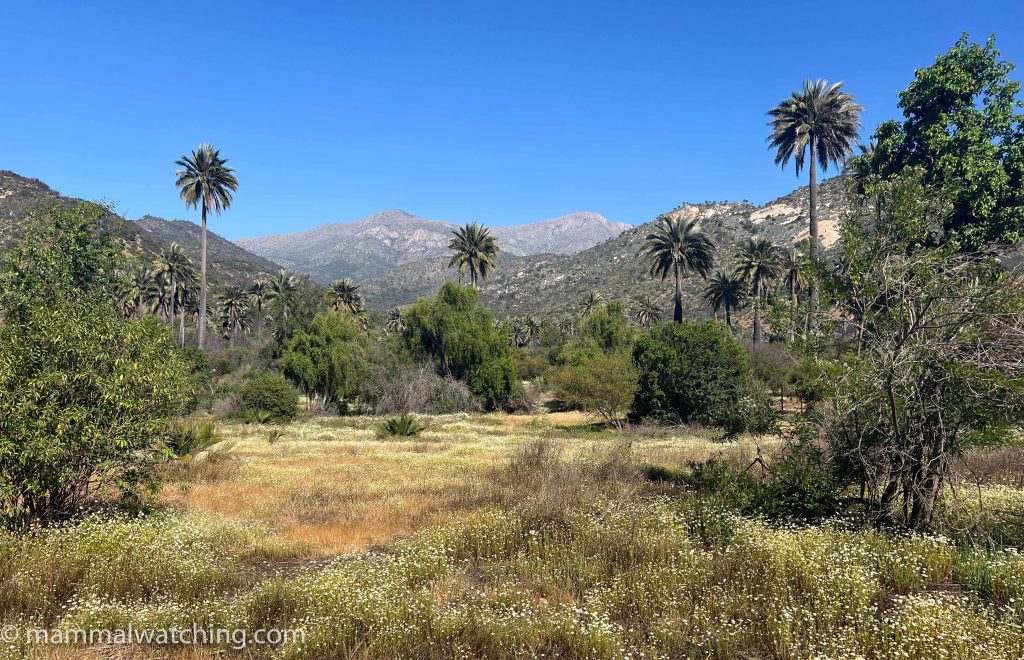
After a quick look at the beautiful Ocoa Sector of La Campana National Park, 90 minutes from Santiago, I had to leave for the airport. I left Alex and Elias there as they were staying for another week in Chile. Alejandro got permission to explore after sunset, something he was able to arrange through the ranger who was a good friend of his.
My taxi driver was excited about the number of Degus he saw crossing the entrance road in the late afternoon. I tried to explain what a top quality rodent they are. I think he had begun to believe me after we stopped the car to try to photograph an animal for the fourth time.
Alex and Elias had a productive night walk, including another Chinchilla Rat – this time in a tree.
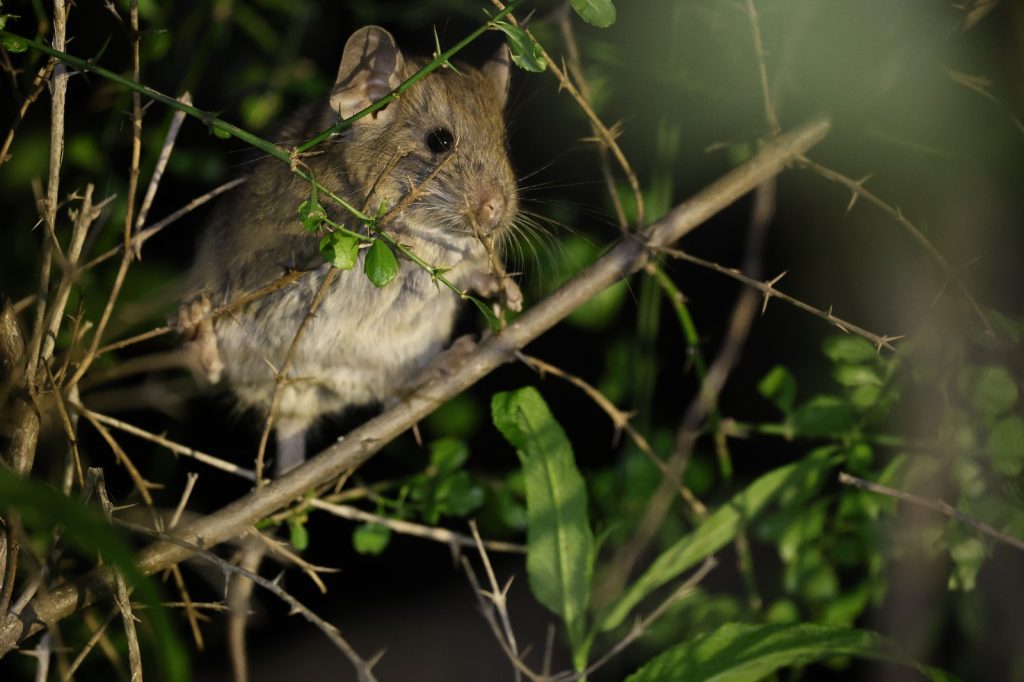
Bennett’s Chinchilla Rat (Abrocoma bennettii), Alex Meyer
And what seems to be a Long-tailed Pygmy Rice Rat.
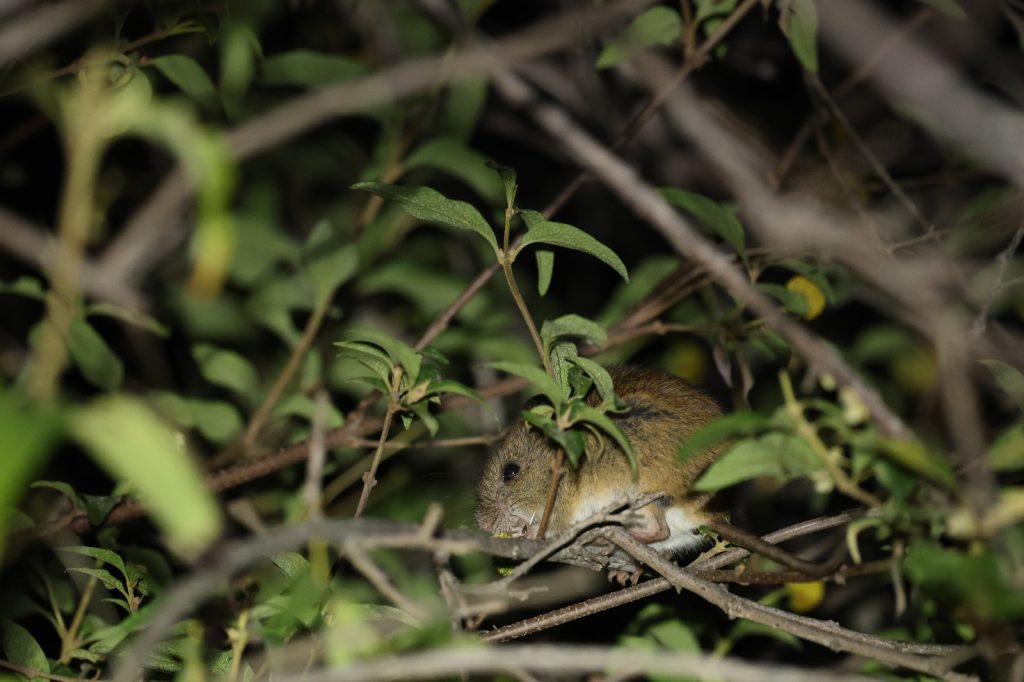
Long-tailed Pygmy Rice Rat (Oligoryzomys longicaudatus), Alex Meyer
So a fun and high quality rodent-filled weekend. A very big thanks to Alejandro and Lizza for their excellent arrangements and pre-trip research; to Boris and Jaime at Las Chinchillas for all their help; to Elsa Sanchez and her daughter Maria for their willingness to help with our Chinchilla quest; and to Alex and Elias for the company.
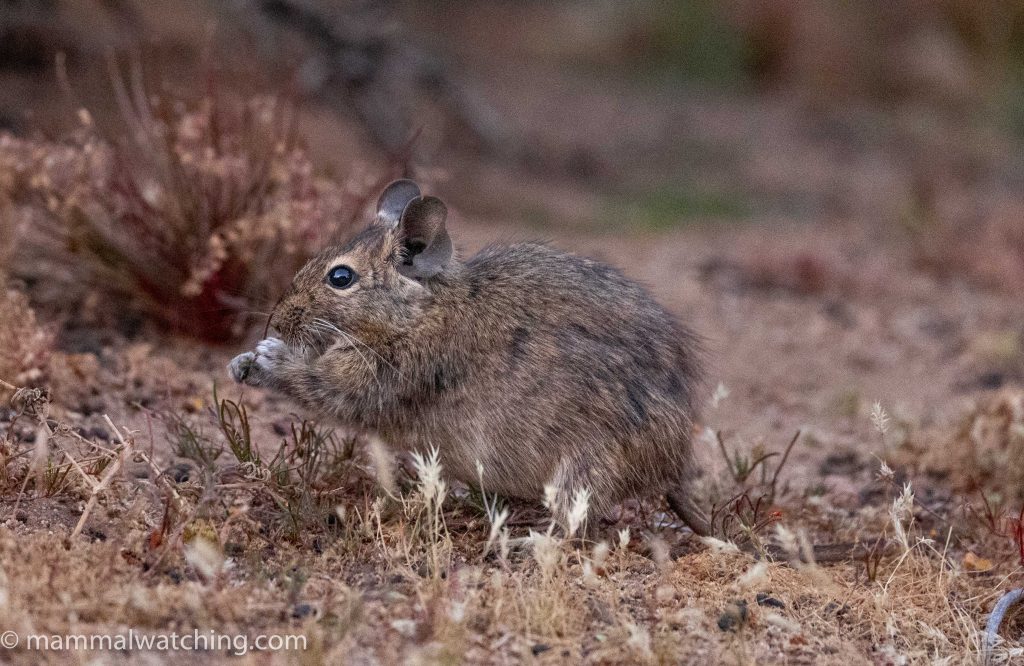
Common Degu (Octodon degus)
Trip List
European Rabbit (Oryctolagus cuniculus) – introduced
Chilean Chinchilla (Chinchilla lanigera) – endemic
Bennett’s Chinchilla Rat (Abrocoma bennettii) – endemic *
Common Degu (Octodon degus) – endemic *
Coruro (Spalacopus cyanus)
Valparaiso Myotis (Myotis arescens)
6 species, 5 lifers (in bold) and 2 of them mammal family lifers (*).
Post author
4 Comments
-
-
RobJansen
Great report Jon, and thanks for the credits! A point of attention; you seem to have two species names wrong:
– Based on the article of Novaes et al. (2022) the bat should be a M. arescens, not atacamensis
– It’s Romy, not Remy 😉Novaes et al. (2022) Systematic review of Myotis (Chiroptera, Vespertilionidae) from Chile based on molecular, morphological, and bioacoustic data
Leave a Reply
You must be logged in to post a comment.


Esadalla
Dear John Hall,
Great report and photos!
Nice to meet you!